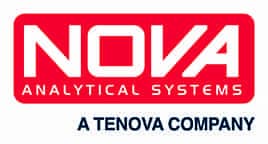Oil & Gas (Petrochemical) Industry Analyzer
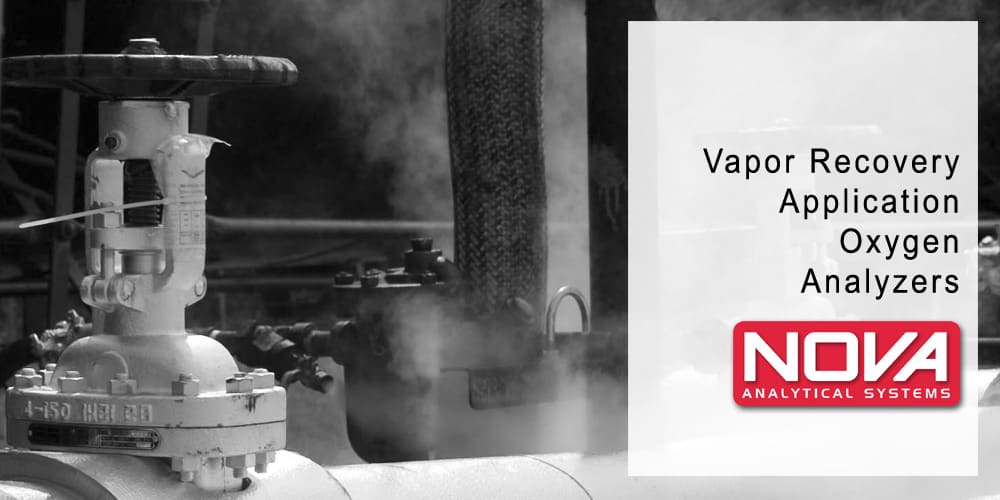
Nova 810 Series Oxygen Analyzers

Discussion
Some petrochemical applications require Oxygen analysis for safe and efficient operation. Oil and gas (petrochemical) is a wide-ranging industry encompassing many processes and applications. Some of these may be roughly grouped into basic categories such as exploration, extraction, production, processing, distribution, and transportation. Most applications in the petrochemical industry have something to do with monitoring mixtures of hydrocarbons, or hydrocarbons and other gases.
The processing of oil and gas carries with it potential hazards that can lead to catastrophic results without appropriate gas analysis. Vapor combustibility and possible presence of deadly gases may be critical factors requiring attention for the protection of individuals and assets.
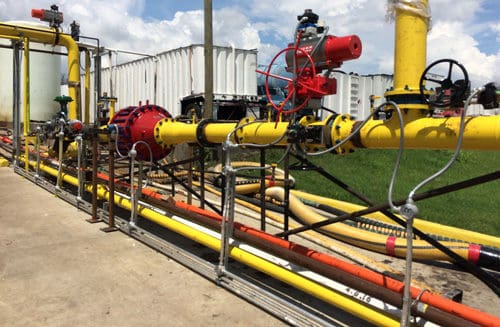
Marine Vapor Recovery
For Nova equipment, one specific petrochemical application requiring gas analysis is marine vapor recovery monitoring. A variety of petrochemical products may be transported over waterways via powered or non-powered barges. Before cleaning the holds of the vessel, the spaces must first be de-gassed, or cleared of chemical vapors.
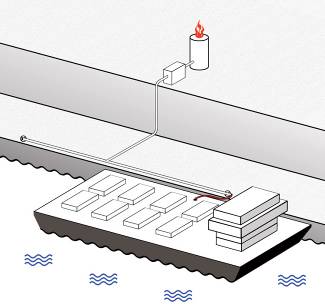
A vapor hose / line is connected between the marine vessel and the dock infrastructure. The hatches of the vessel are opened and the dock vacuum blower is activated. As the chemical fumes / hydrocarbon vapors are pulled out by the vacuum, replacement air is allowed in through the open hatches.
After extraction from the barge, natural gas is added to the incoming vapor stream. The natural gas acts as an enrichment gas to ensure that the air-fuel ratio is rich enough to be destroyed by combustion in the Vapor Combustion Unit (VCU).
These installations are normally part of the permanent dock infrastructure on ports that handle pertrochemical products. Depending on the situation, vapor management might also be handled by a mobile truck-based system that is temporarily coupled to the barge.
Marine Vapor Oxygen Analysis
One way to dynamically ensure that the proper gas mixture is obtained for the VCU is to monitor the oxygen (O2) in the stream just after the enrichment gas injection point. Based on the output of the O2 monitor, the enrichment gas is added at a continuous rate sufficient to ensure that the O2 stays below 14.5%. The measurement of O2 in this case is therefore in a background mixture of marine payload vapors, natural gas, and ambient air.
The relative importance of the O2 measurement in this situation is high enough to warrant some type of redundant measurement. This allows validation of the O2 reading and also provides a back-up O2 measurement if one monitor system fails for some reason. Integrating two O2 sensors in the same sample path of one monitor is good. But integrating two complete and separate O2 monitor systems ensures maximum redundancy.
Further assuring O2 reading reliability is the capability to have the O2 analyzers automatically calibrate themselves on a pre-scheduled basis. Intelligent auto-calibration scheduling ensures that at least one analyzer is always on line even when the other is briefly off-line during calibration.
One additional requirement of this application frequently has to do with the hazard classification of the area in which the O2 analyzers are to be installed. In the projects we have been involved with, the area is usually designated as Class 1 Division 2.
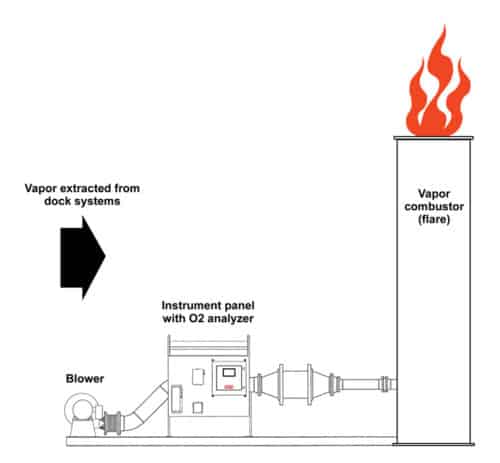
Nova Analyzer
The Nova solution as designed for this application consists of a dual-cabinet system with complete redundancy. The only common article is the hazardous area cabinet purge system that is shared between the two cabinets via connecting conduits. For cabinet temperature management, an optional heater / cooler can also be added and shared between cabinets. When adding cabinet temperature management in hazardous-rated areas, it is important to also consider the hazard rating suitability of these components, as they usually interface with the ambient environment as a function of their operation.
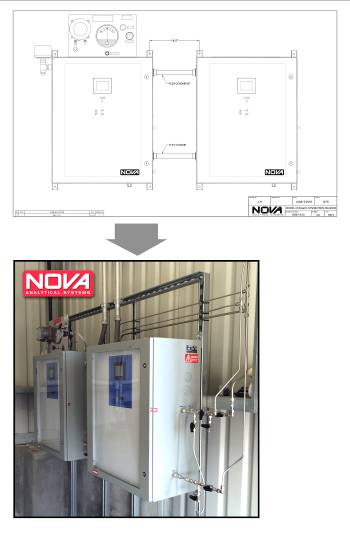
A built-in sample pump and condensate collector in each cabinet ensures that a steady and sufficiently dry sample is delivered to the O2 sensors. A Low Flow alarm will report a low flow error condition before, within, and after the analyzer. The Nova ‘Smart Control’ system in the analyzer allows programmable auto-calibration, diagnostic alarms, factory default restore point, and other features.
The analyzer may be located near the docks and perhaps away from the routine patrol of instrument technicians. It may also be connected to a PLC system that monitors the entire dock works. For these reasons, the Nova solution is available with a remote calibration relay contact that allows the technicians to initiate analyzer calibration from the control room or PLC whenever they wish, without having to physically travel to the analyzer cabinets.
If you have a vapor recovery application that requires continuous redundant O2 measurement, talk to Nova about a solution.

